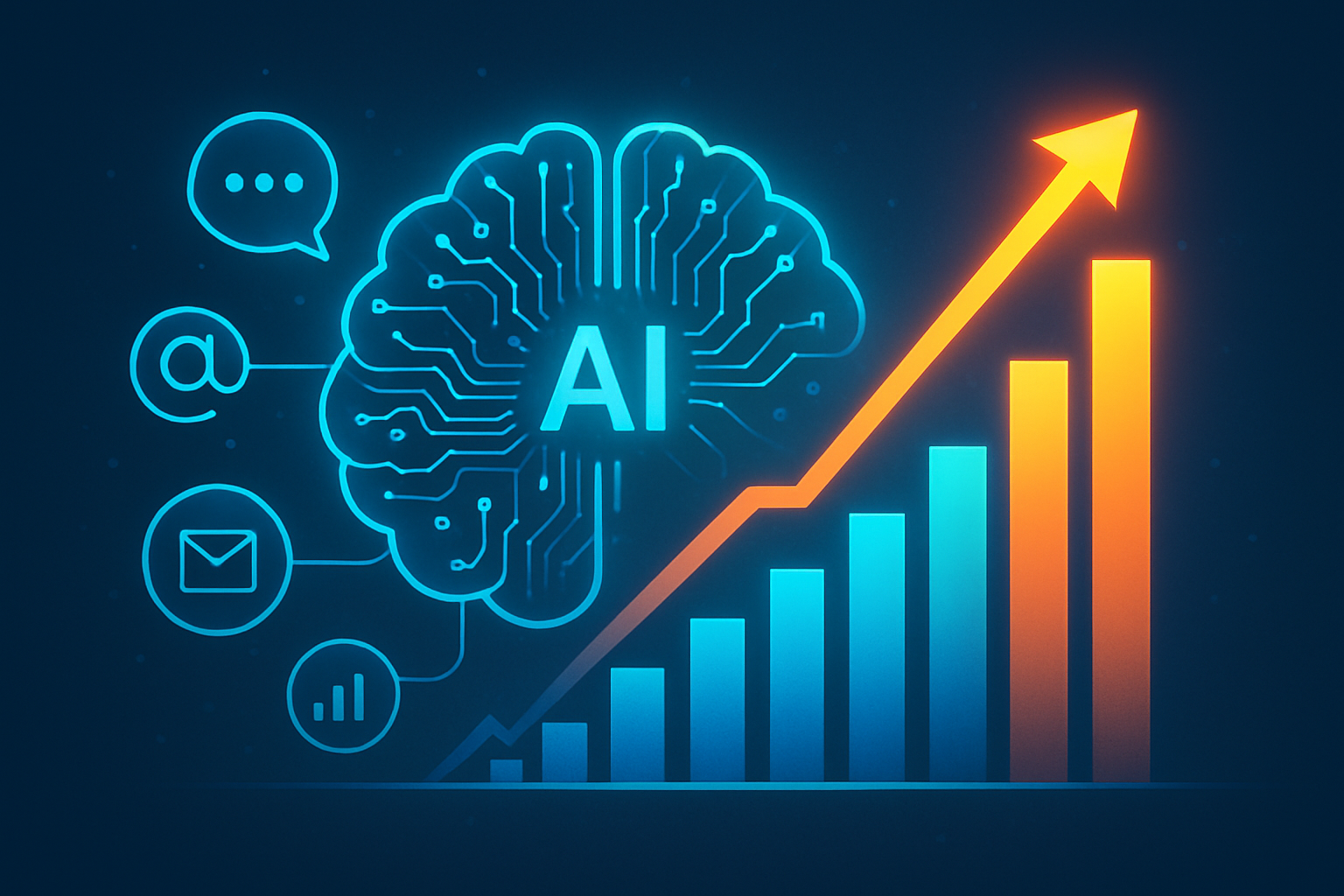Why GEO Marketing Outperforms Traditional SEO
The marketing world shifted overnight when early adopters began attributing 32% of their sales-qualified leads to generative AI search—up from zero just months ago. While traditional SEO practitioners debate algorithm updates, forward-thinking brands are capturing bottom-funnel leads through an entirely different approach: Generative Engine Optimization (GEO).
This isn’t just another marketing trend. AI answer engines already drive 6.5% of organic traffic and are projected to hit 14.5% within the next year, signaling a fundamental shift in how prospects discover and evaluate solutions. The question isn’t whether to adopt GEO. It’s how quickly you can implement it before competitors claim your share of AI-generated visibility.
TABLE OF CONTENTS:
- Key Takeaways
- Understanding the Fundamental Difference: GEO vs Traditional SEO
- Lead Generation Superiority: The 32% Advantage
- Traffic Share Disruption: The Acceleration Factor
- Proven Results: Case Studies in GEO Success
- Implementation Strategy: The Dual-Engine Approach
- Competitive Advantage: Timing and Market Positioning
- Budget Allocation and Resource Optimization
- Future-Proofing Your Search Strategy
- Related Video
Key Takeaways
- GEO marketing generates 32% of sales-qualified leads for early adopters compared to zero from traditional SEO approaches, demonstrating superior revenue potential by capturing prospects at the moment they’re actively seeking solutions through AI-powered searches
- AI answer engines already drive 6.5% of organic traffic and are projected to reach 14.5% within a year, creating an urgent competitive window for brands to optimize for AI citations before the practice becomes commoditized in 18-24 months
- Citation rates increase five-fold (from 12% to 63%) when content is optimized for AI consumption rather than traditional search rankings, proving that structured data markup and entity-rich content dramatically improve visibility in generative search results
- The dual-engine approach maximizes visibility across both traditional and AI-powered search by integrating structured data optimization with entity-focused content development, allowing brands to maintain SEO performance while building AI-optimization capabilities
- Strategic budget allocation of 20-30% toward GEO experimentation delivers faster ROI with citation improvements visible within weeks, rather than the 3-6 months typically required for traditional SEO results to materialize
Understanding the Fundamental Difference: GEO vs Traditional SEO
Traditional SEO operates on a simple premise: rank higher in search results to capture more clicks. GEO marketing flips this model entirely, focusing on being cited and referenced within AI-generated answers rather than competing for click-through rates. The distinction matters because user behavior has fundamentally changed. People increasingly rely on AI summaries for immediate answers rather than browsing multiple websites.
Consider how prospects research solutions today. Instead of clicking through ten different comparison articles, they ask ChatGPT, Perplexity, or Google’s AI Overviews for recommendations. The brands that appear in these AI-generated responses, complete with context and credibility, capture attention without requiring a single click to their website.
| Factor | Traditional SEO | GEO Marketing |
|---|---|---|
| Primary Goal | Rank in search results | Be cited in AI answers |
| Success Metric | Traffic, rankings, conversions | Citation frequency, mention prominence |
| Content Focus | Click-optimized engagement | Structured, machine-readable facts |
| User Journey | Click through to website | Receive answer directly |
| Technical Emphasis | Keywords, backlinks, site speed | Entity markup, structured data |
Lead Generation Superiority: The 32% Advantage
The most compelling argument for GEO marketing lies in its direct impact on sales-qualified leads. While traditional SEO drives traffic that must be nurtured through multiple touchpoints, GEO captures prospects when they’re actively seeking solutions. When AI engines reference your expertise in response to buying-intent queries, you’re positioned as the authoritative solution before prospects even visit your website.
This shift represents more than incremental improvement; it’s a fundamental change in the quality of leads. Traditional SEO often delivers high-funnel traffic that requires extensive nurturing. GEO marketing connects you with prospects who have already been pre-qualified by AI systems that understand context, intent, and relevance. When someone asks an AI engine for the “best enterprise CRM for scaling teams,” and your solution appears in the response, that prospect is significantly closer to purchase than someone who merely clicked your blog post about CRM features.
The velocity advantage compounds over time. Brands that strategically integrate AI optimization with traditional tactics report faster sales cycles and higher conversion rates, as prospects arrive with pre-established trust and an understanding of the solution’s relevance.
Traffic Share Disruption: The Acceleration Factor

The growth trajectory of AI-powered search represents an unprecedented shift in digital discovery. Current data reveals that AI answer engines have rapidly evolved from experimental tools to mainstream research platforms, fundamentally altering how prospects find and evaluate solutions. This acceleration creates both opportunity and urgency for brands willing to adapt their optimization strategies.
The projected jump from 6.5% to 14.5% traffic share within a single year signals more than gradual adoption. It represents a tipping point where AI-first optimization becomes essential for competitive visibility. Brands that delay GEO implementation risk losing double-digit traffic share to competitors who are already optimizing for AI citation and reference.
This disruption extends beyond simple traffic metrics. The global SEO market, valued at over $80 billion, is being disrupted as search behavior shifts to generative models, forcing decision-makers to reconsider fundamental assumptions about digital discovery and lead generation. Traditional SEO investments, while still valuable, must be balanced against the growing influence of AI-mediated search experiences.
Proven Results: Case Studies in GEO Success
Academic research provides compelling evidence for GEO’s effectiveness in real-world applications. Researchers studying Perplexity.ai found that citation rates jumped from 12% to 63%—a five-fold increase. When content was optimized specifically for AI consumption rather than traditional search rankings. This dramatic improvement occurred without changes to traditional SEO metrics, demonstrating GEO’s complementary rather than competitive relationship with existing optimization efforts.
The practical implications extend across industries and company sizes. Smart Rent reported 200 AI citations after fixing technical SEO issues. Companies implementing hybrid approaches —maintaining traditional SEO hygiene while adding GEO-specific optimizations —consistently outperform single-strategy competitors in both citation frequency and overall brand mention prominence.
Implementation Strategy: The Dual-Engine Approach
Successful GEO implementation doesn’t require abandoning proven SEO practices. It demands strategic integration that maximizes visibility across both traditional and AI-powered search environments. The most effective approach combines structured data optimization with entity-focused content development, creating assets that perform well in conventional search results while being easily extractable by AI systems.
Key implementation elements include:
- Structured data markup that clearly identifies entities, relationships, and factual claims within your content
- Summary-first formatting that presents key information in easily digestible, citation-friendly formats
- Authoritative source integration that establishes credibility through explicit attribution and fact verification
- Entity-rich language that helps AI systems understand context and relevance for specific queries
- Conversational content optimization that aligns with natural language query patterns
The technical foundation requires careful attention to schema markup, metadata optimization, and content structure that facilitates AI extraction while maintaining human readability. Strategic optimization for AI Overviews and generative search features creates multiple pathways for visibility, protecting against algorithm changes and search behavior shifts.
Measurement approaches must evolve alongside implementation strategies. Traditional metrics like rankings and click-through rates remain essential, but GEO success requires monitoring citation frequency, mention prominence within AI responses, and brand visibility across generative search platforms. This expanded measurement framework provides more comprehensive insight into actual influence and authority within your target market.
Competitive Advantage: Timing and Market Positioning
The current market presents a unique window of opportunity for brands willing to invest in GEO optimization before it becomes standard practice. Early adopters benefit from reduced competition for AI citations and mentions, similar to the advantage enjoyed by first-movers in traditional SEO during the early 2000s. This temporary competitive gap creates disproportionate returns for companies that act decisively.
Industry analysis suggests that GEO optimization will become commoditized within 18-24 months, as more agencies develop expertise and automated tools simplify implementation. Brands that establish authority and citation patterns now will be better positioned to maintain visibility as competition intensifies and AI systems become more selective about source credibility and relevance.
The strategic implications extend beyond immediate visibility gains. Companies that demonstrate expertise in AI-optimized content development position themselves as forward-thinking industry leaders, attracting prospects who value innovation and competitive advantage. This positioning benefit compounds over time, creating sustainable differentiation that transcends specific tactical implementations.
Budget Allocation and Resource Optimization
Smart budget reallocation doesn’t require dramatic shifts away from proven SEO investments. It demands strategic diversification that hedges against search evolution while capitalizing on emerging opportunities. The most successful brands allocate 20-30% of their search marketing budgets to GEO experimentation and implementation, maintaining core SEO performance while building AI-optimization capabilities.
Resource requirements for GEO implementation often overlap with existing content marketing and technical SEO capabilities. Content teams can adapt their processes to include entity markup and structured formatting, while technical teams can expand their schema implementation expertise to support AI extraction requirements. This operational efficiency makes GEO adoption more accessible than developing an entirely new marketing channel.
ROI measurement timelines differ significantly between traditional SEO and GEO marketing. While traditional SEO improvements often require 3-6 months to show measurable impact, GEO optimizations can produce citation improvements within weeks of implementation. This faster feedback loop enables more agile testing and optimization, accelerating overall performance improvement and reducing uncertainty about investment effectiveness.
Future-Proofing Your Search Strategy
The trajectory toward AI-mediated search experiences appears irreversible, with major technology companies investing billions in generative search capabilities and user adoption accelerating across demographic segments. Brands that prepare for this future today position themselves advantageously for sustained growth and visibility, regardless of specific platform changes or algorithm updates.
Strategic preparation involves building organizational capabilities that transcend individual tactics or platforms. Teams that understand entity relationships, structured data implementation, and AI-friendly content development will adapt successfully to future search innovations. At the same time, companies focused solely on traditional SEO may struggle with obsolescence and competitive displacement.
The integration of programmatic SEO approaches with AI optimization creates scalable systems for maintaining visibility. This systematic approach reduces dependence on manual optimization while ensuring consistent performance across multiple search platforms and user interfaces.
For brands serious about maintaining competitive advantage in search visibility, the choice is clear: begin GEO implementation now, while the learning curve provides sustained advantage. The 32% lead-generation advantage early adopters are experiencing today is just the beginning of GEO’s potential impact. As AI systems become more sophisticated and user behavior continues shifting toward immediate, synthesized answers, the brands that establish authority and visibility now will capture disproportionate market share for years to come.
Work with the leading SEO agency that understands both traditional optimization and emerging AI-first strategies, ensuring your investment delivers measurable results across current and future search environments.




